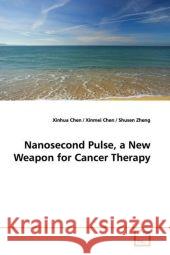Nanosecond Pulse, a New Weapon for Cancer Therapy » książka
Nanosecond Pulse, a New Weapon for Cancer Therapy
ISBN-13: 9783639155105 / Angielski / Miękka / 2009 / 120 str.
High intensity nanosecond pulsed electric fields (nsPEF) were applied on melanoma tumors to observe functional and structural biological changes and to investigate the possible molecular mechanisms responsible. A treatment of 300 nanosecond pulses were delivered to melanoma. The nsPEF Tx caused tumor self-destruction with sharply decreased cell volumes and shrunken nuclei. The apoptotic biochemical tests confirmed nsPEF Tx induced apoptosis in a time-dependent manner. Examination of gross vessel and micro-vessel density indicated direct vascular damage to pre-existing vessels and anti-angiogenic consequence on neovascular development concomitant with tumor self-destruction. In contradistinction to ionization, thermal or electroporation Tx, nsPEFs produced broad impacts on the melanomas in vivo, ranging from DNA fragmentation, caspase activation, nuclear damage, apoptosis induction, damage to pre-existing intra-tumoral vessels and neovascular inhibition. This work was supported by National Natural Sciense Fundation of China (Grant Number No. 3070078) and Juliette Reidy Cancer Fellowship from Frank Reidy Research Center in U.S.A.











